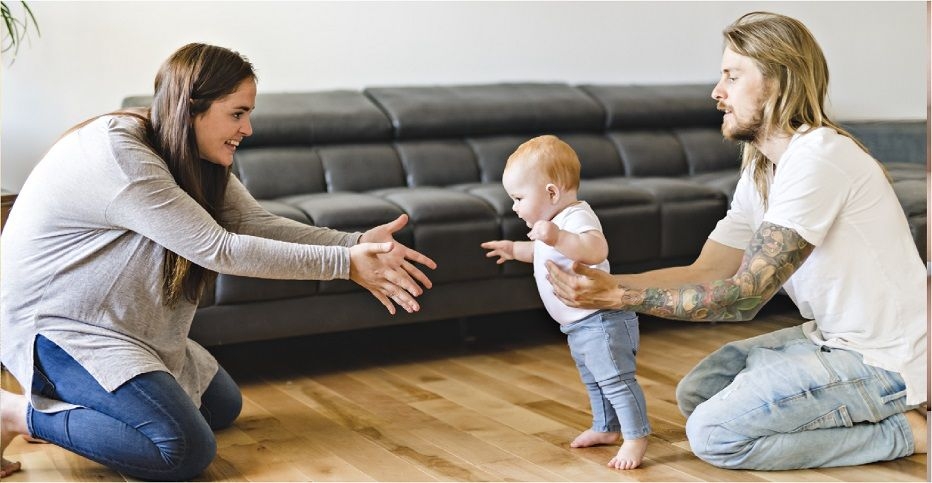Your little one’s first steps are one of their most exciting milestones! Whether they’re toddling steadily around the playroom or hurrying through the house, watching those little legs fly is often one of the highlights of early parenthood. So, when do babies begin to walk? And what can you do to support their physical development?
How does a baby learn to walk?
Babies tend to pass the following milestones on their way to walking and wobbling around:
- Rolling on the floor
- Sitting
- Crawling or scooting
- Pulling themselves up
- Moving around furniture
When do babies begin to walk?
Many babies begin to pull themselves up at around 9 months. After which, they may attempt to let go of whatever piece of furniture (or part of your leg) they’re grasping and fly solo. For most children, it takes a couple more months of wobbly attempts and tumbles before they develop the balance to stay upright on their own.
Most babies don’t take their first independent steps until after their first birthday, at around month 14 (on average). However, it’s not unusual for your little one to start cruising as early as 7 months or as late as 18 months.
It’s important to remember that every baby develops at their own pace. So, while you can help to encourage their development, avoid adding unnecessary pressure and be sure to let them take their own journey.
How can I create a safe walking environment?
When those little legs start rocketing around, might need to make some adjustments to your baby-proofing - their eyes and head are at a new height and different things might be grabbing their attention or posing a danger. Consider padding any sharp corners on furniture and using child locks and baby gates to block off unsafe areas, including stairways and low-lying drawers. Look around your home at your child’s eye level to spot any potential obstacles or hazardous zones before letting them run free-range (but always remember there is no substitute to adult supervision).
How can I support my baby’s walking development?
When your little one starts pulling themselves up or pushing pint-sized shopping trolleys around the house, the best way to support them is to give them plenty of safe space and time to practise their moves. Let them roam around the living room, explore the backyard and give them lots of time outside the stroller, carrier or swing. You can also hold your baby’s hands while they walk to improve their balance and confidence, or entice them with a trail of toys, surrounded by soft cushions in the case of a tumble.
On the journey to walking, remember to let your little one take their time. Until they’re ready to tread solo, try and enjoy all the baby steps along the way.



